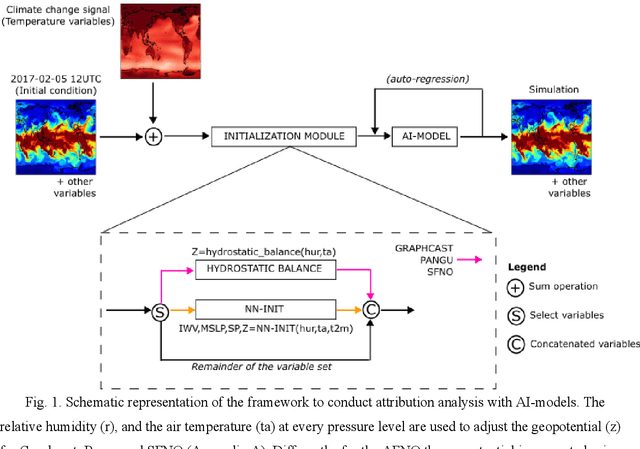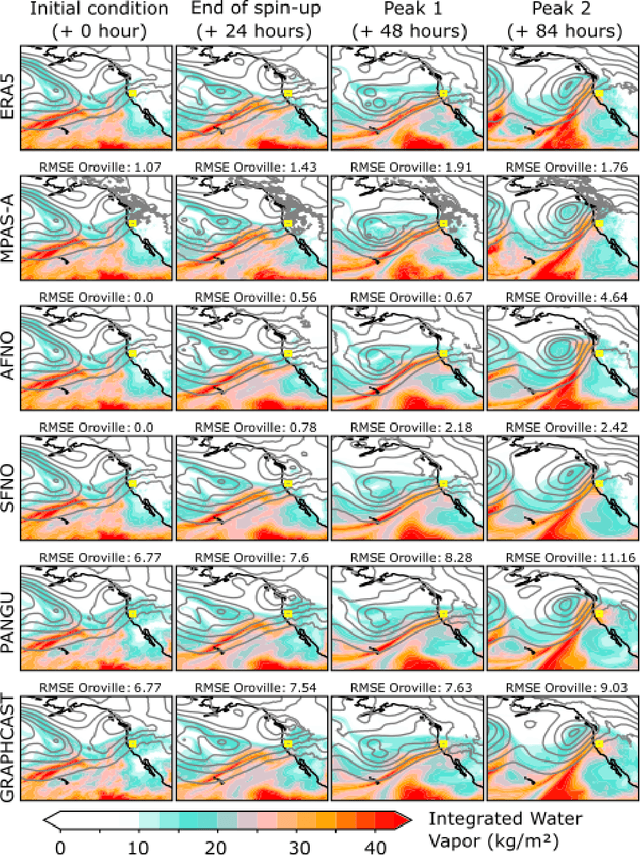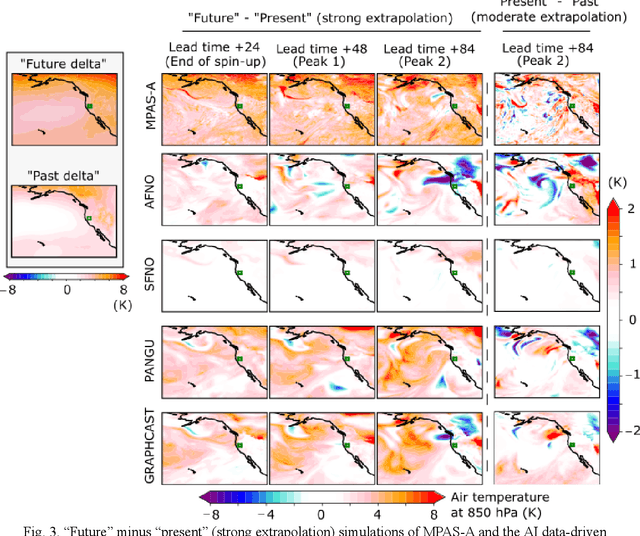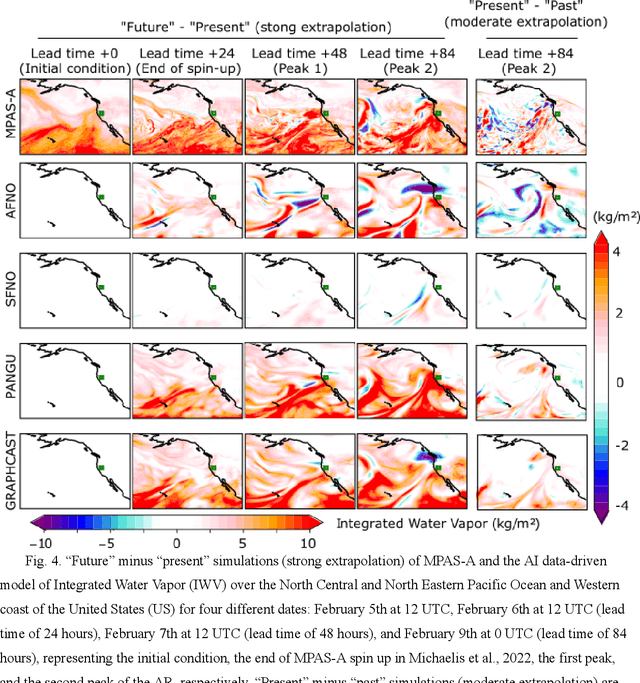Allison Michaelis
Harnessing AI data-driven global weather models for climate attribution: An analysis of the 2017 Oroville Dam extreme atmospheric river
Sep 17, 2024



Abstract:AI data-driven models (Graphcast, Pangu Weather, Fourcastnet, and SFNO) are explored for storyline-based climate attribution due to their short inference times, which can accelerate the number of events studied, and provide real time attributions when public attention is heightened. The analysis is framed on the extreme atmospheric river episode of February 2017 that contributed to the Oroville dam spillway incident in Northern California. Past and future simulations are generated by perturbing the initial conditions with the pre-industrial and the late-21st century temperature climate change signals, respectively. The simulations are compared to results from a dynamical model which represents plausible pseudo-realities under both climate environments. Overall, the AI models show promising results, projecting a 5-6 % increase in the integrated water vapor over the Oroville dam in the present day compared to the pre-industrial, in agreement with the dynamical model. Different geopotential-moisture-temperature dependencies are unveiled for each of the AI-models tested, providing valuable information for understanding the physicality of the attribution response. However, the AI models tend to simulate weaker attribution values than the pseudo-reality imagined by the dynamical model, suggesting some reduced extrapolation skill, especially for the late-21st century regime. Large ensembles generated with an AI model (>500 members) produced statistically significant present-day to pre-industrial attribution results, unlike the >20-member ensemble from the dynamical model. This analysis highlights the potential of AI models to conduct attribution analysis, while emphasizing future lines of work on explainable artificial intelligence to gain confidence in these tools, which can enable reliable attribution studies in real-time.
 Add to Chrome
Add to Chrome Add to Firefox
Add to Firefox Add to Edge
Add to Edge